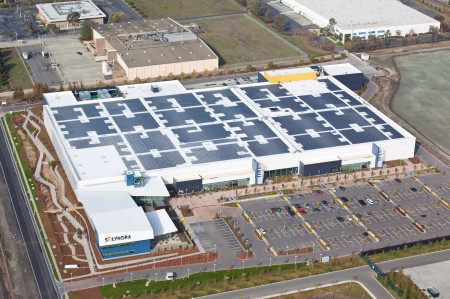By Jackie Roberts, Environmental Defense Fund
Bad news from Solyndra has set off a bit of a panic around everything from the future of solar in the U.S., the role of government in supporting innovative technologies, and prospects for clean energy jobs. Caution is advised and perspective is needed lest we walk away from a pivotal new global market. Let’s start with the big picture on solar. I believe it is critical that we focus on the full value chain for energy and environmental solutions to better understand the economic growth inherent in the clean energy market. In the case of solar, an analysis released last month by GTM Research examined the entire value chain – from raw material inputs and capital equipment needs to panel assembly and installation and maintenance. The results show that the U.S. has a trade SURPLUS with rest of the world AND with China in the solar sector defined across the entire value.

Let me highlight some of the key findings:
- The U.S. was a significant net exporter of solar energy products with total net exports of $1.9 billion in 2010.
- The U.S. solar industry had a positive trade balance with China with net exports of $247 million – $540 million.
- The largest solar energy export product is polysilicon, the feedstock for crystalline silicon photovoltaics, of which the U.S. exported $2.5 billion in 2010.
- 2010 U.S. solar energy installations created a combined $6.0 billion in direct value, of which $4.4 billion (75%) accrued to the U.S.
This is a good news story, and not surprisingly to me as over the past several years we’ve heard positive stories from companies like Komax Solar, an equipment supplier. Six years ago, Komax took a risk and transitioned itself from medical technology and electronic machines to supplying the equipment needed in the assembly plants for solar panels. Komax is exporting, has tripled its workforce, and has leveraged its expertise in precision machining to move into new solar markets.
What role the government played in the larger solar story is hard to pinpoint, but many solar companies had real and critical capital needs during the recession that the American Recovery & Reinvestment Act of 2009 (ARRA) filled. Project Sunburst, a Maryland Energy Administration (MEA) initiative that benefitted greatly from the ARRA funding, created demand for solar panels installation on public buildings and triggered $36 million private investment. In addition, while the primary goal was making it easier for public entities to go solar, “It had an additional goal or larger goal to encourage the growth of solar energy generation in the state as a resource,” MEA spokesperson Ian Hines said. The investment helped give the industry the extra push that put it over the tipping point as a maturing industry in Maryland.
This leads me to believe that ARRA has indeed been an important ingredient. The government has also taken a portfolio approach that includes companies like Nanosolar, which received almost $44 million as a 48C tax credit (one of the ARRA programs) and is currently hiring. This is a company whose prospects excite me.
At the end of the day, experience shows that the private sector is better at picking winners and losers, and the government is much better at “setting the table” – for example, investing in core, enabling innovations such as developing a well-designed, open-platform smart grid that enables new entrants such as solar power to compete with old electricity providers (the value chain for smart grid solutions, by the way, is extremely promising for US firms and job creation). And, equally as important, the government must put into place energy policies that provide a level playing field and ensure that the full costs to society of energy products and services are accounted for, policies that ultimately put a price on carbon.
 Editor’s Note: This column comes to us as a cross post courtesy of Environmental Defense Fund. Author credit goes to Jackie Roberts.
Editor’s Note: This column comes to us as a cross post courtesy of Environmental Defense Fund. Author credit goes to Jackie Roberts.